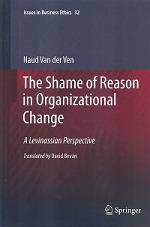At this time that question is triggered by my rereading passages from the book My promised land by Ari Shavit about which I previously reported. Especially tickling are the passages referring to the Israeli food giant Strauss, by the twinkling intensity of Israeli society that resounds in it.
Shavit: “Israel is a country that is quickly excited; Israelis therefore have need for more and more incentives. The Strauss-team understood that this also applies to the taste of food. They realized that the Israeli savory snacks had to be much saltier than American snacks and confectionery much sweeter than the European. Chocolate was to be much more chocolate-esque and vanilla much more vanilla-esque. Nuances in Israel were not appreciated: everything had to be powerful and extreme and caress the palate with strong aromas. For an example, the Israeli Milky contained twice as much cream as the German example. But the Israelis do not want just more, they also want continuously something new. They are quickly tired of something. For that reason, Strauss replaces its products much faster than its European sister companies”.
That this lust for excitement does not necessarily have to lead to flatness and insipidity, appears from the development of Israeli dance. Which also is largely driven by basic physical stimuli, but at the same time manages to achieve a high level of artistry. Israeli dance is not so much focused on beauty, it is more about gouge: impulses from the body, and bare feet instead of spitze.
Intuition and feeling, these are according to experts the basis of Israeli dance. The drive of the dancers, their great technique, the inner need that expresses the choreography – they are constants in Israel’s young dance history, which make Israeli dance at present internationally into a success story.
The choreographer Guy Behar explains the strength of this dance tradition from the social situation in Israel. “The context in which we operate is dynamic, turbulent”, he says. “You never know what will happen. Every moment the situation can change. If you have something to say, you should say it now. That inner necessity and immediacy can be seen in almost all the work”.
Yes, this artistic and communicative dynamics definitely does have something stimulating and that appeals to me. But at the same time I would find all that a bit too raw. Furthermore, I doubt whether I’m not too stress-sensitive to live permanently in a war situation. I actually think I cannot manage that. Rather, to me applies what the former CIDI Chairman John Manheim once said of himself: that his nervous system did not allow him to live in Israel.
But as great a problem for me would be that the provocative dynamics of cultural and economic life in Israel stands out quite shrill against the lukewarmness and indifference exhibited by the majority of the Israeli population when it comes to a peace settlement and the treatment of the Palestinians. An attitude that so perfectly, and not coincidentally, is embodied by the absolute-non-dancer Netanyahu. Actually incomprehensible.
Also see The many dimensions of Ari Shavit and Live to see

